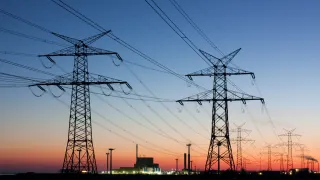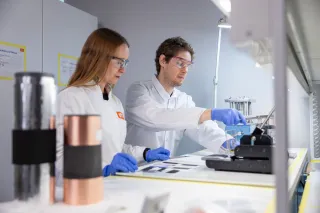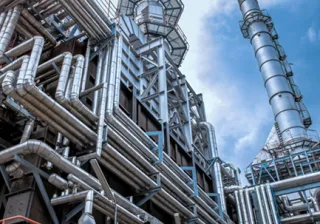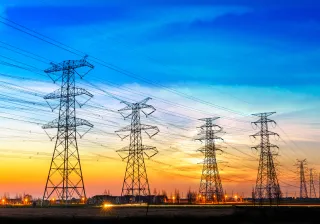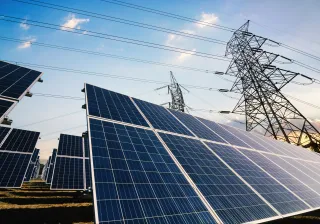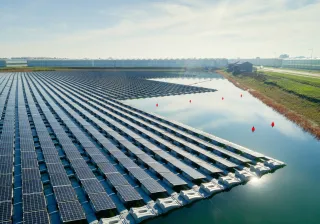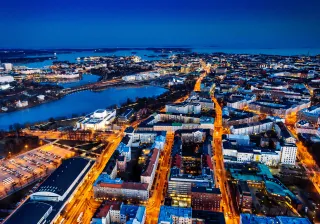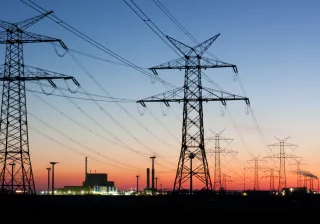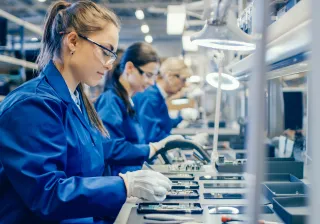The need for cleaner and more affordable energy production, coupled with a more efficient distribution and utilization, is as an undeniable reality in the face of advancing climate change. Addressing this urgency, VTT's recent publication titled "Solutions to Overcome Bottlenecks in Energy Transition" uniquely synthesizes the research team's innovative perspectives on achieving a successful energy transition in Finland. Within this publication, five critical bottlenecks of the green energy transition have been identified, including the resilience of our energy system during exceptional circumstances. In response to these challenges, the researchers propose alternative solutions that that also offer growth and export opportunities for Finnish companies.
The new energy system is developing rapidly, and companies are moving at full steam towards growth opportunities created by the green transition. Nonetheless, the journey of transformation is far from straightforward, and there are numerous bottlenecks that are delaying the transition process.
"In this context, our publication is timely and significant, as it weaves together an overview of the challenges and solutions of the energy transition, concerning various segments of society. The publication also introduces novel solutions and business models that have the potential to drive Finnish enterprises towards growth in the global market. In an era where the tangible effects of climate change increasingly touch our daily lives, we aspire for this publication to offer hope as well", asserts Tuula Mäkinen, Lead of Green Electrification at VTT.
Navigating crisis with energy system flexibility
Our society is becoming more and more dependent on uninterrupted energy access. Climate change accentuates weather-related vulnerabilities and natural disasters. In turn, the digitization of energy systems opens pathways to novel forms of malfunctions, human errors, and even criminal exploitation. Among the pivotal challenges is our nation's energy resilience. Our energy infrastructure needs to be adaptable, ensuring its capacity to navigate global crises and natural events.
"Addressing this bottleneck, a promising solution is the development of energy resilience in residential areas. A more profound interaction between buildings and the energy grid is imperative to support recovery during emergency situations. Energy resilience can be improved with distributed local energy sources, integrated control of the district heating system and increased energy efficiency. New business models support the economic profitability of these solutions", says Mäkinen.
Another example of the bottlenecks we face is understanding the effects on our environment in a flexible and thorough way. While climate change undeniably stands as one of the paramount challenges of our era, we need to acknowledge that it is not the sole concern demanding our attention – for example losing biodiversity causes serious threats to the environment. Environmental effects must be taken into account in decision-making comprehensively, as different technologies and solutions have conflicting effects on the environment.
"As one potential solution, we introduce the establishment of technical carbon sinks. For instance, we are actively working on a method involving the capture of carbon dioxide from the air, followed by its storage within materials like construction products. The significance of carbon sinks, whether natural or technical, has been underlined in the fight against climate change. These sinks are essential to reducing emissions and work hand in hand to combat the challenges of climate change", Mäkinen reminds.
The green transition offers major export opportunities for Finnish companies
The development of new solutions requires active interaction between decision-makers, companies and the research industry. At best, the green transition is estimated to open export opportunities for Finland of up to 85–100 billion euros by 2035.*
"The energy revolution presents Finland with vast economic prospects, but for these prospects to materialize, we need technology companies who are willing to push the boundaries of innovation. This pursuit also demands the bravery to embrace failure as part of the journey. It is vital to nurture an environment that fosters innovation, as well as sufficient funding to bolster research and development. Particularly in the piloting phase, it's crucial that solutions are trialed on a significant scale. We warmly welcome new entrants to revolutionize the energy landscape", says Jussi Manninen, Executive Vice President of VTT's carbon-neutral solutions business area.
A company called Steady Energy, the latest spin-off from VTT, is currently commercializing the LDR-50 small nuclear reactor, suitable for a district heating network. The solution produces carbon-neutral heat for industry and homes.
"Switching away from coal for residential heating is a market area that has a significant growth potential worth hundreds of billions of euros in Europe alone. We hope to see more similar examples in the future. In its new strategy, the association of Finnish companies, Hydrogen Cluster Finland, also aims to accelerate Finland to become Europe's leading hydrogen economy of high-refining value by 2035. There is a demand for domestic hydrogen production, and among that, a need to develop new types of value chains", Manninen adds.
---
* The report by the Climate Leadership Coalition of Finnish companies and the consulting company Boston Consulting Group (BCG) Finland's spearheads for green growth.
Read the full publication



